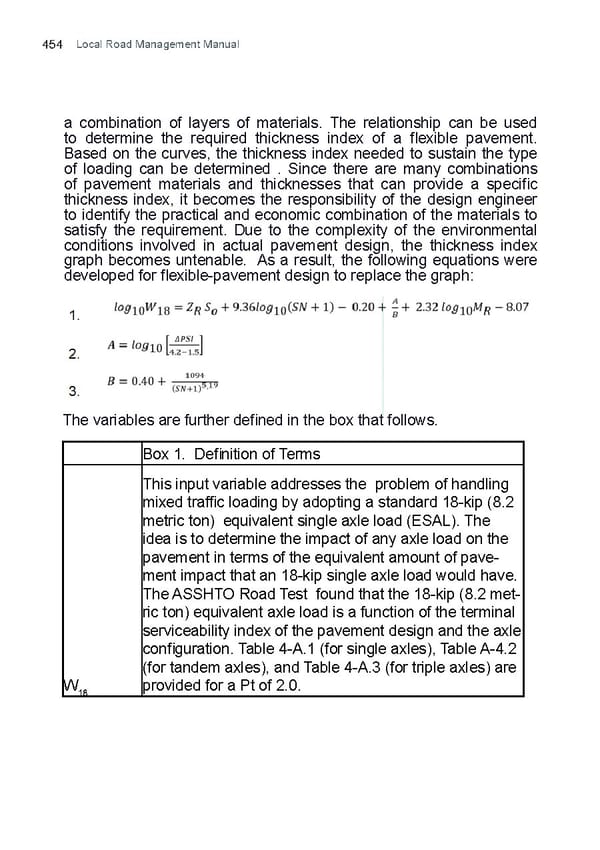Local Road Management Manual 454 a combination of layers of materials. The relationship can be used to determine the required thickness index of a flexible pavement. Based on the curves, the thickness index needed to sustain the type of loading can be determined . Since there are many combinations of pavement materials and thicknesses that can provide a specific thickness index, it becomes the responsibility of the design engineer to identify the practical and economic combination of the materials to satisfy the requirement. Due to the complexity of the environmental conditions involved in actual pavement design, the thickness index graph becomes untenable. As a result, the following equations were developed for flexible-pavement design to replace the graph: The variables are further defined in the box that follows. Box 1. Definition of Terms This input variable addresses the problem of handling mixed traffic loading by adopting a standard 18-kip (8.2 metric ton) equivalent single axle load (ESAL). The idea is to determine the impact of any axle load on the pavement in terms of the equivalent amount of pave- ment impact that an 18-kip single axle load would have. The ASSHTO Road Test found that the 18-kip (8.2 met- ric ton) equivalent axle load is a function of the terminal serviceability index of the pavement design and the axle configuration. Table 4-A.1 (for single axles), Table A-4.2 (for tandem axles), and Table 4-A.3 (for triple axles) are W provided for a Pt of 2.0. 18
 Local Road Management Manual Page 454 Page 456
Local Road Management Manual Page 454 Page 456